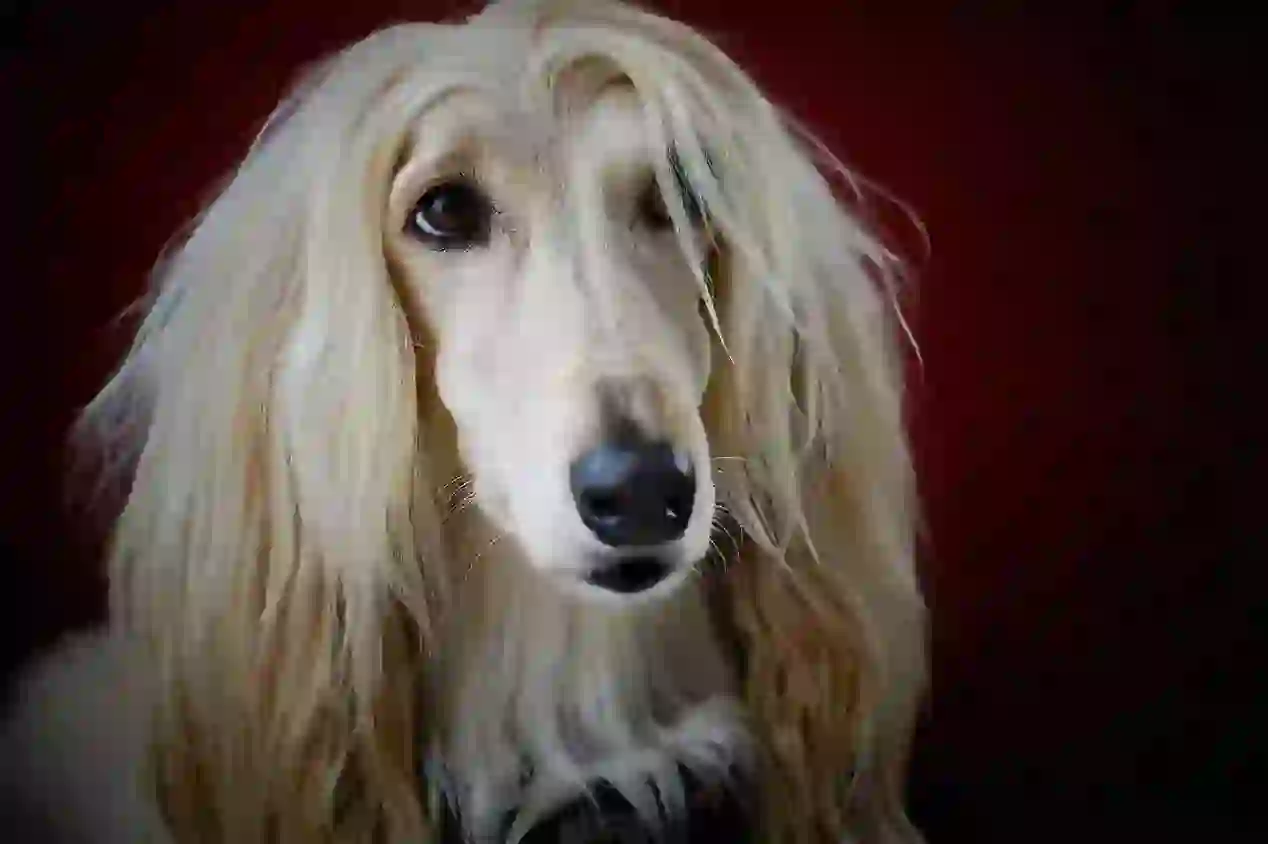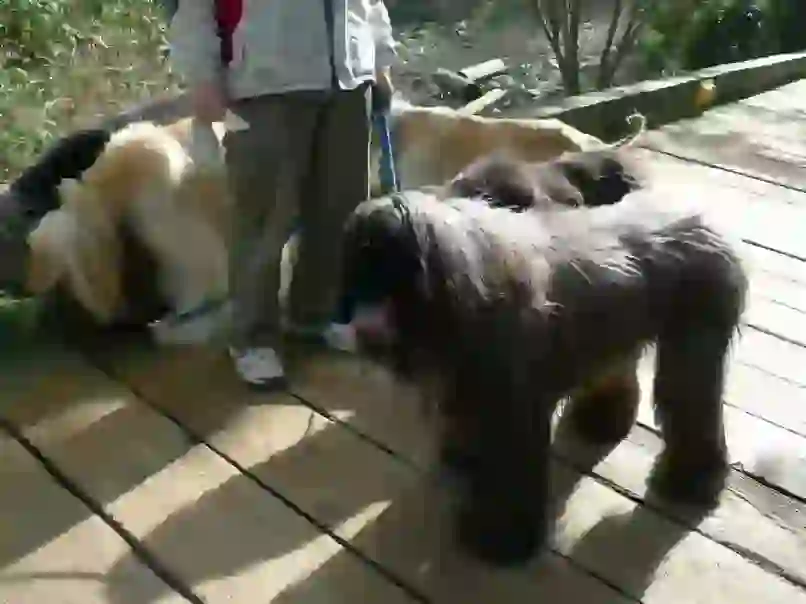
Afghan Hound
Afghan Hound
Afghan Hound
Have you heard of the Afghan Hound breed? These dogs are also kept in Japan, known for their long hair, elegant beauty, and dignified appearance that leaves a lasting impression. Let's introduce the Afghan Hound!
Afghan Hound Basic Infomation

Basic Information
Country of Origin: Afghanistan Height: Male 68-74cm Female 63-69cm Weight: 23-27kg The Afghan Hound is characterized by its long hair, giving an elegant and noble impression as it runs with its hair flowing in the wind. Originally a hunting dog, it searches for prey with its head held high, exuding a dignified and mystical presence. It has excellent vision, able to spot prey up to 1 km away. Despite its beauty, the Afghan Hound is very fast, capable of running at speeds of 50-60 km/h, similar to a car. This breed combines speed and beauty. The head is long, the legs are sturdy for running in deserts and mountains, and the waist is high. The tail is in the shape of a "ring tail" with a curled tip, and the ears are long and hidden by hair. The most distinctive feature is its long hair covering its legs, which protects the body from the cold. Afghanistan, its country of origin, has temperature differences of up to 50 degrees Celsius, so the long hair provides protection from the cold while the single coat also protects from the heat. The Afghan Hound is often thought to have only long hair, but there are three types: those with short hair, long hair on the ears, and thick, long hair. Regardless of length, their hair is fine like silk. The coat colors vary among Afghan Hounds, including black, cream, red, fawn, gold, yellow, white, gray, blue, brindle, and tri-color. There are also black-masked and domino-colored Afghan Hounds with black or white faces. Typically, the face does not have hair, but some have beard-like hair growing from the chin, showing various features.

History of the Afghan Hound
The Afghan Hound is said to be one of the oldest dog breeds, with its ancestor being the Persian "Saluki." It is believed to have been on Noah's Ark in the Old Testament, and dogs resembling Afghan Hounds are depicted in historical artifacts like pyramids and murals, dating back to around 4000 BC. How they came to Afghanistan is unknown, but they were kept by the royalty of Egypt and Afghanistan and served as hunting dogs. Afghanistan's mountainous and desert regions have severe climate changes, and the long hair of Afghan Hounds helped them adapt to these conditions. Afghan Hounds were used to hunt rabbits, foxes, gazelles, leopards, and wolves, and served as livestock guardians. In 1907, their beauty led to their introduction to the UK, where they became known as show dogs. To enhance their beauty, they were bred selectively, and in the 1920s, the ancestor of today's Afghan Hounds, named "Kazini," appeared. Their popularity grew, and in 1926, they were registered with the world's oldest kennel club, the British Kennel Club. Today, there are two types of Afghan Hounds: those used for hunting and livestock guarding, and those bred for show purposes. Their ancient appearance may contribute to their mystical impression.
Afghan Hound Q&A

What is the Origin of the Name Afghan Hound?
The name Afghan Hound can be understood by separating it. "Afghan" comes from Afghanistan, the country of origin, and "Hound" means "hunting dog." Together, it means "hunting dog of Afghanistan." The name reflects their origin and purpose, and despite their beautiful fur, the name does not reference their appearance. Being one of the oldest dog breeds, a standard name may have been preferred.

Is the Afghan Hound a Dumb Dog?
The Afghan Hound has an unfortunate reputation as the "dumbest dog in the world." It's hard to imagine given their beautiful appearance. Why are they thought to be dumb? It stems from their personality. They are not considered dumb because of low intelligence, but because of their high independence and desire to make their own decisions. Afghan Hounds, originally hunting dogs, ran at speeds humans couldn't match and caught prey by themselves. They earned trust by delivering good results. Their stubbornness and independence make them seem unresponsive to commands, leading to the perception of being "dumb." Afghan Hounds do not respond to people they are not interested in, which can make them seem aloof. However, they are actually friendly and can be affectionate with their owners. They may not play with children but will watch over them. Their independence means they do not follow orders blindly but will be loyal and affectionate if trust is established.

Can You Keep an Afghan Hound in Japan?
Afghan Hounds are kept in Japan, but not found in pet shops. They are acquired from specialized breeders in Japan. Getting an Afghan Hound from a specialist breeder has many advantages. The breeders understand Afghan Hounds well, can answer questions, and provide assurance about the dog's upbringing and the parents' condition. Due to their personality, training might seem challenging, but Japanese breeders often train Afghan Hounds to be family pets. This makes it easier for new owners to manage them. However, there are few specialized breeders in Japan, so finding one might be difficult. Take your time to find the right one.

Can Afghan Hounds Live Indoors?
While Afghan Hounds can adapt to various climates, they are from the dry regions of Afghanistan. Japan's hot and humid climate is not ideal, so they are more comfortable indoors where temperature and humidity can be controlled. Their fine hair is prone to static electricity, so maintain indoor humidity during winter. Afghan Hounds need a lot of exercise, so a large yard is beneficial. Let them run freely outside, but avoid long periods outdoors in summer to prevent heatstroke. Ensure they can move freely indoors and provide a large bed as their own space. Afghan Hounds enjoy freedom, so a spacious home and yard are ideal.

Do Afghan Hounds Need a Lot of Exercise?
Originally hunting dogs, Afghan Hounds have a lot of stamina. They need two walks a day, each lasting 30-60 minutes. They are accustomed to mountainous terrain, so include stairs and slopes in their routes, and incorporate brisk walking and jogging to meet their exercise needs. In addition to walks, they need time to run freely in a dog park or large yard. Playing with balls or frisbees is also good. Maintaining their beautiful physique requires a lot of exercise, so owners need to keep up. Insufficient exercise can lead to stress and aggression, so ensure they get plenty of activity.

Is Training Afghan Hounds Difficult?
As mentioned, breeders often train Afghan Hounds initially, so it might not be very difficult. However, they are proud dogs by nature. Understanding this personality is key to training them patiently. Training from a young age is crucial. Afghan Hounds make their own decisions, so acclimate them to society and train them to exhibit good behavior voluntarily. Use praise rather than scolding during training. Toilet training is especially important. Male Afghan Hounds need to be trained to sit while urinating to avoid soiling their long hair. Start training them as puppies to prevent control issues later. Seek professional help if needed.

Is Grooming Afghan Hounds Difficult?
Maintaining the long, beautiful coat of an Afghan Hound requires careful brushing. Their fine hair tangles easily, so daily brushing is necessary. Brush gently to avoid cutting or pulling hair, especially after walks to remove debris. Monthly baths are sufficient, but clean soiled areas as needed. Dry them thoroughly to prevent skin diseases. Regular visits to a grooming salon for trims and special care are important. For pet Afghan Hounds, trimming to a manageable length is beneficial. Their droopy ears covered in hair need regular cleaning to prevent dirt buildup. Proper grooming is essential for their health and beauty, and it also strengthens your bond with them.

What Diseases are Afghan Hounds Prone to?
Afghan Hounds are susceptible to several diseases. Notably: "Testosterone-Responsive Dermatitis": Neutered males are prone to symmetrical hair loss. Afghan Hounds are prone to skin diseases, so seek veterinary help if you notice any abnormalities. "Afghan Myelopathy": A condition affecting the spinal cord from the neck to the waist, leading to deterioration. There is no cure, and management is necessary. It is hereditary, so check the parents before adopting. "Chylothorax": Accumulation of lymph fluid in the chest cavity, preventing full lung expansion. This sudden condition requires surgery in some cases. Seek immediate veterinary care if your Afghan Hound shows difficulty breathing. Afghan Hounds have an average lifespan of 12-18 years, longer than most large breeds but short compared to humans. Ensure a happy life for them as part of your family.

Would you like to become a part of the 'Animalbook.jp'?
Turn your knowledge into Q&A and share it with the world. ※Publication will be activated after purchase. Let's share information together!
Afghan Hound Type of List

Information
Congratulations! You are the first commenter!

Create Your Favorite List!
Afghan Hound
Save the animals you love! Build your own list to quickly revisit your favorites later.

Would you like to leave a comment?
※Please note: This is for the purchase of rights to post comments within the article.
Find Your Favorites!
Our shop offers a unique and attractive selection of goods themed around various animals.
Afghan Hound References
Afghan Hound Introduction of media used

出典 : https://unsplash.com/ja/写真/茶色と白のロングコートの犬-WLGx0fKFSeI

出典 : https://commons.wikimedia.org/wiki/File:AfghanHound.jpg

出典 : https://unsplash.com/ja/写真/大人のロングコートイエロードッグ-35p5-Z3Zyzo

出典 : https://unsplash.com/ja/写真/黄色い布地に横たわる茶色の長い髪の犬-3b0CBmF27Ck

出典 : https://commons.wikimedia.org/wiki/File:Afghan_Hound_1.JPG

出典 : https://unsplash.com/ja/写真/ロングコートの白い犬のマクロ撮影-Ei7FKsOCdbY

出典 : https://unsplash.com/ja/写真/茶色と黒の長毛の犬-pwRfs5IT6Go

Help Enrich Our Animalbook.jp with Your Media!
We are constantly looking to expand and enrich our Animalbook.jp with amazing photos and videos of animals. If you have any media that you'd like to share, please contribute and help us showcase the beauty and diversity of the animal kingdom. Your submissions will be credited and featured in our encyclopedia, reaching a wide audience of animal lovers.



















